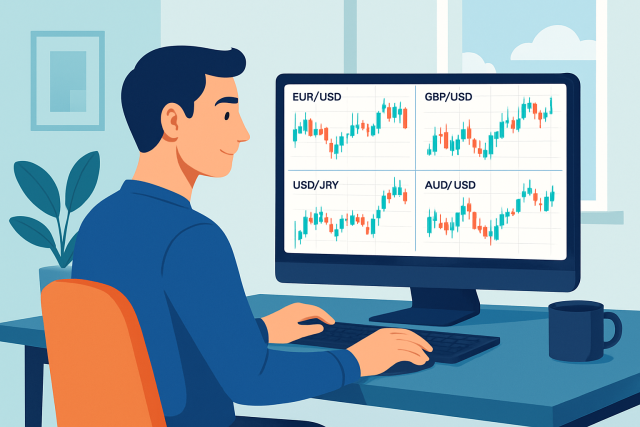
Understanding Leverage in Forex Trading
Leverage in forex allows traders to amplify their market exposure with limited capital. Understand h...

Forex currency trading hours are essentially the windows of opportunity when the global foreign exchange market swings open its doors for business. Getting a handle on these hours is pretty important for traders aiming to catch the ebb and flow of market liquidity and volatility worldwide.
Forex currency trading runs around the clock on weekdays, kicking off in one financial center and wrapping up in another as the world spins through the day.
Time zones play a big role in shaping forex trading hours since market openings and closings are tied to local business times all around the globe. Traders really have to roll with the punches, adjusting their schedules depending on their location.
| Forex Session | Location | Local Time (Standard) | UTC Time | DST Shift (hours) |
|---|---|---|---|---|
| Sydney | Australia | 7:00 AM - 4:00 PM | 22:00 - 7:00 | +1 during DST |
| Tokyo | Japan | 9:00 AM - 6:00 PM | 00:00 - 9:00 | No DST |
| London | United Kingdom | 8:00 AM - 5:00 PM | 07:00 - 16:00 | +1 during DST |
| New York | United States | 8:00 AM - 5:00 PM | 13:00 - 22:00 | +1 during DST |
Note: These times are approximate and might swing a bit depending on your broker and location—I've found it pays to double-check.
Daylight saving time means clocks spring forward or fall back in many countries, nudging market hours an hour ahead or behind depending on the season. Since not everyone jumps on the DST bandwagon at the same time—some skip it altogether—traders often find themselves navigating a tricky patch of mismatched session overlaps and wobbly market liquidity.
Many traders often overlook how daylight saving time subtly shifts market hours, which can easily cause them to miss those key overlap periods. Keeping an eye on this little detail can really sharpen timing and give their trading strategies a noticeable boost—I've found it is one of those small tweaks that can make a surprisingly big difference.
Volatility and liquidity in the forex market usually hit their peak during specific trading sessions, which in turn shakes up pricing and spreads. Traders often sharpen their edge by syncing their strategies with these bustling periods.
Successful traders often tailor their strategies to the forex session they are working with to squeeze every bit of opportunity from the volatility during overlaps like London-New York. They also cruise through the calmer waters of quieter periods.
Pinpoint those session overlaps like the classic London/New York combo to really benefit from higher liquidity and livelier price moves.
Zoom in on periods of high volatility if scalping or momentum trading is your game because these windows can be real goldmines.
Customize your stop losses and take profits to match the session’s expected volatility. It’s a smart little trick to keep your risk in check.
Avoid trading when liquidity runs thin since those moments often cause slippage and wild, unpredictable price swings nobody wants to deal with.
Always keep one eye glued to the news release schedules because trading during economic events can make all the difference when volatility rises.
Use handy tools like trading clocks and market hour apps or broker platforms that display session times in your local timezone.
Aligning your schedule with the busiest market hours and weaving those session insights into your trading routine usually gives your confidence a nice little boost and helps keep your execution smoother and more consistent.
Many traders tend to believe that forex currency trading hours mean markets are always buzzing 24/7 or that trading at any given moment guarantees a profit.
11 articles published
Known for demystifying options trading for retail investors, this former hedge fund manager brings Wall Street expertise to everyday trading education.
Read Posts
Leverage in forex allows traders to amplify their market exposure with limited capital. Understand h...

Discover a practical, step-by-step approach to start forex trading using essential tools like Tradin...

Discover how to trade forex for beginners with easy-to-understand concepts, step-by-step guides, and...

New to forex? Discover essential insights, risks, and strategies in this beginner-friendly guide to...
27 articles published
23 articles published
20 articles published
